SFTPC
-
Official Full Name
surfactant protein C
-
Overview
This gene encodes the pulmonary-associated surfactant protein C (SPC), an extremely hydrophobic surfactant protein essential for lung function and homeostasis after birth. Pulmonary surfactant is a surface-active lipoprotein complex composed of 90% lipids and 10% proteins which include plasma proteins and apolipoproteins SPA, SPB, SPC and SPD. The surfactant is secreted by the alveolar cells of the lung and maintains the stability of pulmonary tissue by reducing the surface tension of fluids that coat the lung. Multiple mutations in this gene have been identified, which cause pulmonary surfactant metabolism dysfunction type 2, also called pulmonary alveolar proteinosis due to surfactant protein C deficiency, and are associated with interstitial lung disease in older infants, children, and adults. Alternatively spliced transcript variants encoding different protein isoforms have been identified.[provided by RefSeq, Feb 2010] -
Synonyms
SFTPC; surfactant protein C; SP-C; PSP-C; SFTP2; SMDP2; BRICD6; pulmonary surfactant-associated protein C; SP5; BRICHOS domain containing 6; pulmonary surfactant apoprotein-2 SP-C; pulmonary surfactant-associated proteolipid SPL(Val);
- Recombinant Proteins
- Cell & Tissue Lysates
- Protein Pre-coupled Magnetic Beads
- Bovine
- Human
- Mouse
- Rat
- Rhesus Macaque
- E.coli
- HEK293
- HEK293T
- In Vitro Cell Free System
- Mamanlian cells
- Mammalian Cell
- Wheat Germ
- Yeast
- Flag
- GST
- His
- His (Fc)
- Avi
- His|GST
- KSI
- Myc
- DDK
- Myc|DDK
- N/A
- N
- Background
- Quality Guarantee
- Case Study
- Involved Pathway
- Protein Function
- Interacting Protein
- SFTPC Related Articles
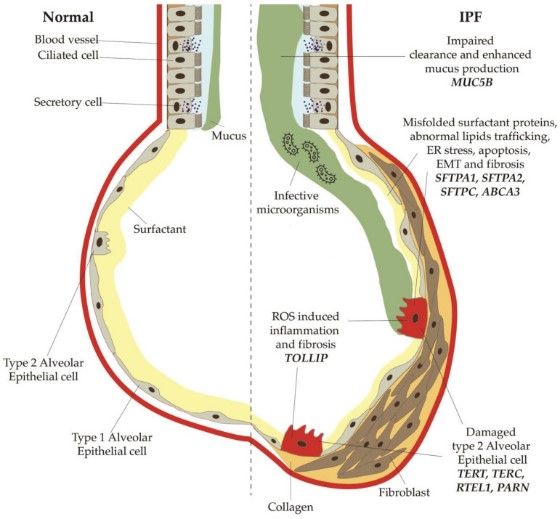
Fig1. Main profibrotic mechanisms secondary to mutations or polymorphisms in the genes for telomerases, surfactant proteins, mucin 5B. (Claudio Tirelli, 2022)
What is SFTPC protein?
SFTPC (surfactant protein C) gene is a protein coding gene which situated on the short arm of chromosome 8 at locus 8p21. This gene encodes the pulmonary-associated surfactant protein C (SPC), an extremely hydrophobic surfactant protein essential for lung function and homeostasis after birth. Pulmonary surfactant is a surface-active lipoprotein complex composed of 90% lipids and 10% proteins which include plasma proteins and apolipoproteins SPA, SPB, SPC and SPD. The surfactant is secreted by the alveolar cells of the lung and maintains the stability of pulmonary tissue by reducing the surface tension of fluids that coat the lung. The SFTPC protein is consisted of 197 amino acids and its molecular mass is approximately 21.1 kDa.
What is the function of SFTPC protein?
SFTPC is an important lung protein whose main function is to maintain alveolar stability and prevent alveolar collapse. It reduces the surface tension of the alveoli by regulating the synthesis and secretion of lung surfactant, thereby maintaining the dilated state of the alveoli. In addition, SFTPC also has anti-inflammatory, antioxidant and anti-fibrotic effects, which can protect the lungs from the damage of inflammation and oxidative stress, and maintain the normal function of the lungs.
SFTPC Related Signaling Pathway
SFTPC is a small protein expressed in the lungs and is primarily involved in alveolar homeostasis and immune defense. SFTPC protein mainly involves the following signaling pathways: 1) by binding to receptors on the surface of alveolar epithelial cells, activation of downstream signaling molecules, such as ERK1/2, promotes cell proliferation, differentiation and maintains alveolar stability; 2) Participate in immune regulation, such as NF-κB signaling pathway and TGF-beta signaling pathway; 3) Participate in oxidative stress response and maintain the REDOX balance of lung tissue by regulating ROS production and clearance.
SFTPC Related Diseases
SFTPC is mainly expressed in alveolar type II epithelial cells and is essential for maintaining normal alveolar function. Abnormal or absent SFTPC protein may lead to lung tissue damage and dysfunction, resulting in a range of diseases, such as acute lung injury, idiopathic pulmonary fibrosis, alveolar proteinosis, etc. These diseases can cause symptoms such as difficulty breathing, persistent cough, chest pain and, in severe cases, can be life-threatening.
Bioapplications of SFTPC
SFTPC gene mutations are associated with the development of some lung diseases (such as chronic interstitial lung disease, pulmonary fibrosis, etc.), so SFTPC genetic testing can help diagnose these diseases. In addition, the SFTPC protein can be used as a biomarker for lung disease to assess disease severity and prognosis.
High Purity
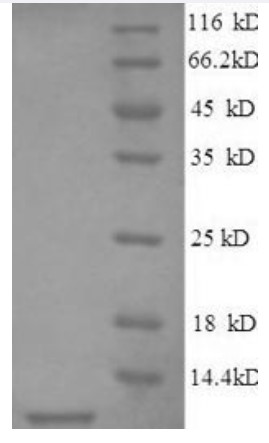
Fig1. SDS-PAGE (SFTPC-5062H) (PROTOCOL for western blot)
.
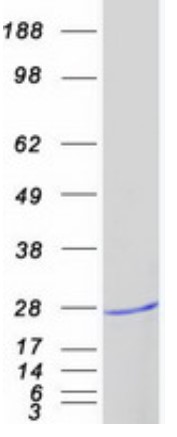
Fig2. SDS-PAGE (SFTPC-4700H) (PROTOCOL for western blot)
Case Study 1: J V Degiulio, 2010
Although nonviral gene therapy has great potential for use in the lung, the relative lack of cell-specific targeting has limited its applications. The researchers have developed a new approach for cell-specific targeting based on selective nuclear import of plasmids in nondividing cells. Using a microinjection and in situ hybridization approach, they tested several potential DNA sequences for the ability to mediate plasmid nuclear import in alveolar type II epithelial (ATII) cells. Of these, only a sequence within the human surfactant protein C (SP-C) promoter was able to mediate nuclear localization of plasmid DNA specifically in ATII cells but not in other cell types. They have mapped the minimal import sequence to the proximal 318 nucleotides of the promoter, and demonstrate that binding sites for nuclear factor I, thyroid transcriptional factor 1, and GATA-binding protein 6 and the proteins themselves are required for import activity. Using intratracheal delivery of DNA followed by electroporation, they demonstrate that the SP-C promoter sequence will enhance gene expression specifically in ATII cells in mouse lung.

Fig1. Plasmids containing the SP-C promoter show nuclear import activity in MLE-12 cells in the absence of cell division.
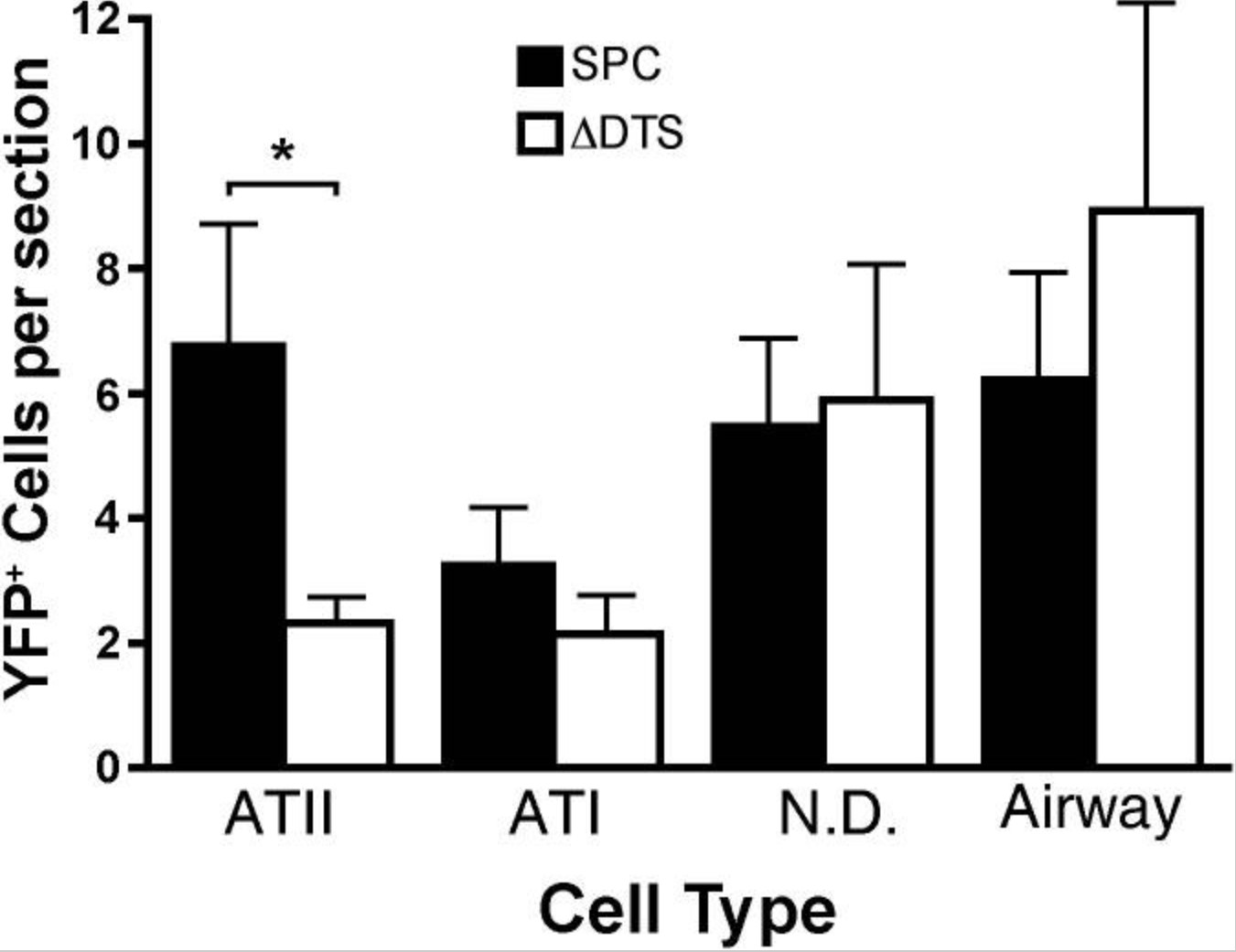
Case Study 2: Dunja Lukovic , 2006
Surfactant protein C (SP-C) is an essential component for the surface tension-lowering activity of the pulmonary surfactant system. It contains a valine-rich alpha helix that spans the lipid bilayer, and is one of the most hydrophobic proteins known so far. SP-C is also an essential component of various surfactant preparations of animal origin currently used to treat neonatal respiratory distress syndrome (NRDS) in preterm infants. The limited supply of this material and the risk of transmission of infectious agents and immunological reactions have prompted the development of synthetic SP-C-derived peptides or recombinant humanized SP-C for inclusion in new preparations for therapeutic use.
The researchers describe herein the recombinant production in bacterial cultures of SP-C variants containing phenylalanines instead of the palmitoylated cysteines of the native protein, as fusions to the hydrophilic nuclease A (SN) from Staphylococcus aureus. The resulting chimerae were partially purified by affinity chromatography and subsequently subjected to protease digestion. The SP-C forms were recovered from the digestion mixtures by organic extraction and further purified by size exclusion chromatography. The two recombinant SP-C variants so obtained retained more than 50% alpha-helical content and showed surface activity comparable to the native protein, as measured by surface spreading of lipid/protein suspensions and from compression pi-A isotherms of lipid/protein films.
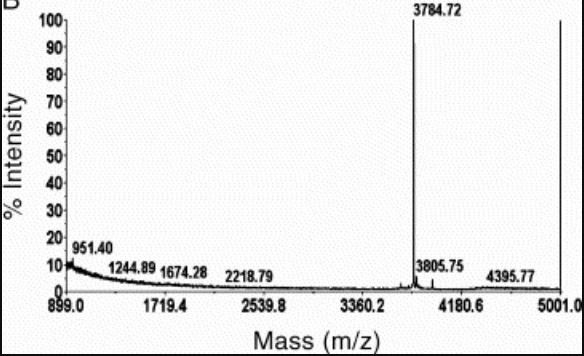
Fig3. Mass spectra of rSP-Cs purified on Sephadex LH20.
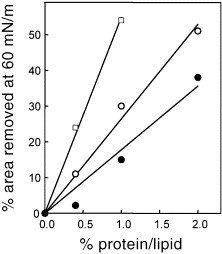
SFTPC involved in several pathways and played different roles in them. We selected most pathways SFTPC participated on our site, such as Defective CSF2RA causes pulmonary surfactant metabolism dysfunction 4 (SMDP4), Defective CSF2RB causes pulmonary surfactant metabolism dysfunction 5 (SMDP5), Defective pro-SFTPC causes pulmonary surfactant metabolism dysfunction 2 (SMDP2) and respiratory distress syndrome (RDS), which may be useful for your reference. Also, other proteins which involved in the same pathway with SFTPC were listed below. Creative BioMart supplied nearly all the proteins listed, you can search them on our site.
| Pathway Name | Pathway Related Protein |
|---|---|
| Defective CSF2RA causes pulmonary surfactant metabolism dysfunction 4 (SMDP4) | CSF2RA;SFTPC;SFTPB;CSF2RB |
| Defective CSF2RB causes pulmonary surfactant metabolism dysfunction 5 (SMDP5) | SFTPB;SFTPC;CSF2RA |
| Defective pro-SFTPC causes pulmonary surfactant metabolism dysfunction 2 (SMDP2) and respiratory distress syndrome (RDS) | SFTPB;SFTPC |
| Disease | FKBP1A;gag;PRELP;IPO5;CFTR;HEY2;WHSC2;FMOD;DOCK2 |
| Diseases associated with surfactant metabolism | SFTPB;SFTPC;CCDC59 |
| Diseases of metabolism | MMAA;AMN;MTRR;EPM2A;FDX1L;GYG2;FDX1;CYP11A1;FDXR |
| Metabolism of proteins | CPA3;EID3;PMPCB;ADAMTS1;IGFBP5B;SLC34A2A;MUC13;NAT8;ADAMTSL4 |
| Surfactant metabolism | GPR116;SLC34A2A;CCDC59;CTSH;CKAP4;ZDHHC2;GATA6;DMBT1;LMCD1 |
SFTPC has several biochemical functions, for example, protein binding, protein homodimerization activity. Some of the functions are cooperated with other proteins, some of the functions could acted by SFTPC itself. We selected most functions SFTPC had, and list some proteins which have the same functions with SFTPC. You can find most of the proteins on our site.
| Function | Related Protein |
|---|---|
| protein binding | QKI;MAPRE3;SULT2A1;SERPINB3C;CHD2;HHIPL2;RADIL;SERPINA3;FAM110C |
| protein homodimerization activity | CREB3;NR0B1;TENM3;SLC39A13;MYOM1;TGFB1;DCK;DMBX1;ID1 |
SFTPC has direct interactions with proteins and molecules. Those interactions were detected by several methods such as yeast two hybrid, co-IP, pull-down and so on. We selected proteins and molecules interacted with SFTPC here. Most of them are supplied by our site. Hope this information will be useful for your research of SFTPC.
SEC61G; CXCL9; SYNE4; SEC22A; TMEM79
- Q&As
- Reviews
Q&As (7)
Ask a questionEnvironmental factors affect SFTPC expression, impacting lung defense mechanisms and susceptibility to lung diseases.
Molecular mechanisms of SFTPC-related interstitial lung disease involve disrupted surfactant metabolism and increased lung tissue inflammation.
SFTPC is crucial in the lung's response to injury and infection, modulating inflammatory responses and tissue repair.
Therapeutic strategies targeting SFTPC can be effective in treating lung conditions like pulmonary fibrosis and ARDS by restoring surfactant function and reducing inflammation.
SFTPC deficiency alters surfactant composition and function, compromising lung elasticity and gas exchange in the alveolar space.
Mutations in SFTPC impair lung function and development, leading to neonatal respiratory disorders by disrupting surfactant homeostasis.
SFTPC collaborates with other surfactant proteins and lipids to maintain lung stability and prevent alveolar collapse.
Customer Reviews (3)
Write a reviewEfficient protein purification; excellent yield and purity.
Invaluable expertise in protein engineering; exceptional service.
Trustworthy peptide synthesis; aids in our peptide-based research.
Ask a Question for All SFTPC Products
Required fields are marked with *
My Review for All SFTPC Products
Required fields are marked with *


